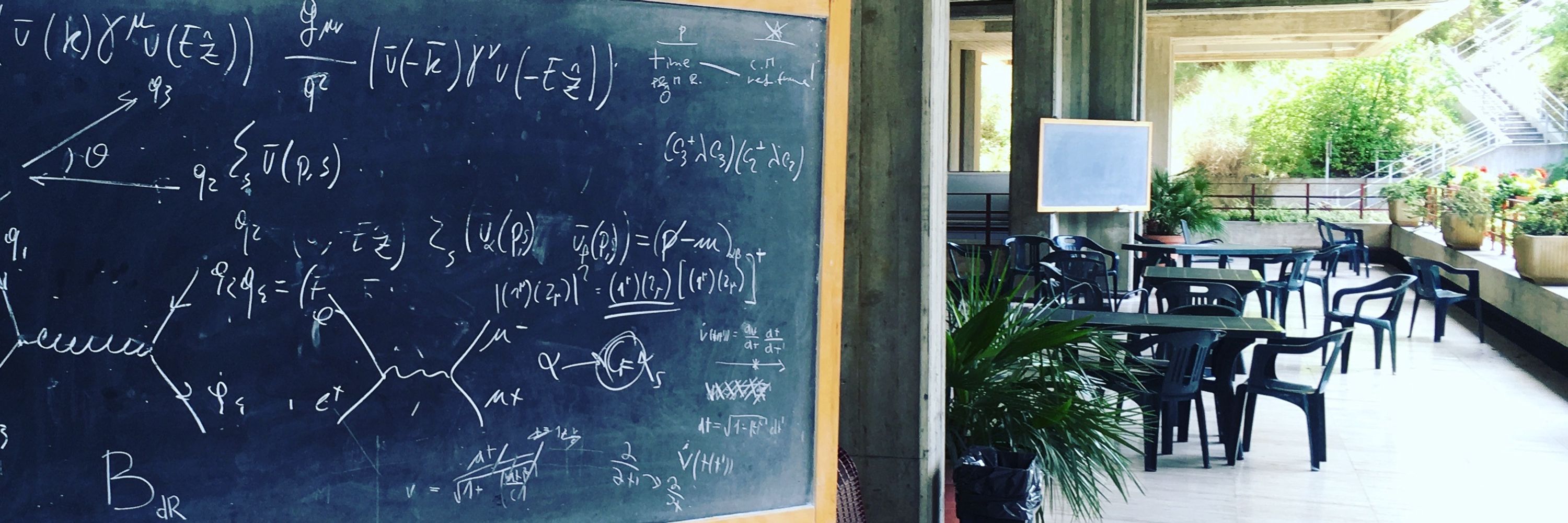
Alexander Kasprzyk
@amkasprzyk.bsky.social
https://kasprzyk.work
Algebraic Geometry • Combinatorics • Mirror Symmetry • Machine Learning
Editor-in-Chief for “Experimental Mathematics”.
Member of EPSRC’s Math Strategic Advisory Team.
Mathematician at the University of Warwick.
Algebraic Geometry • Combinatorics • Mirror Symmetry • Machine Learning
Editor-in-Chief for “Experimental Mathematics”.
Member of EPSRC’s Math Strategic Advisory Team.
Mathematician at the University of Warwick.
The panellists at this session are Anne-Sophie Kaloghiros (Brunel), Alexandre Martin (Heriot-Watt), Emma Foxell (EPSRC), Sarah Whitehouse (Sheffield), and Lucy Covington (LMS)
November 11, 2025 at 9:16 AM
The panellists at this session are Anne-Sophie Kaloghiros (Brunel), Alexandre Martin (Heriot-Watt), Emma Foxell (EPSRC), Sarah Whitehouse (Sheffield), and Lucy Covington (LMS)
See the paper "Paving tropical ideals" by Nicholas Anderson and Felipe Rincón, published in the Journal of Algebraic Combinatorics.
link.springer.com/article/10.1...
link.springer.com/article/10.1...

Paving tropical ideals
Tropical ideals are a class of ideals in the tropical polynomial semiring that combinatorially abstracts the possible collections of supports of all polynomials in an ideal over a field. We study…
link.springer.com
November 10, 2025 at 9:27 AM
See the paper "Paving tropical ideals" by Nicholas Anderson and Felipe Rincón, published in the Journal of Algebraic Combinatorics.
link.springer.com/article/10.1...
link.springer.com/article/10.1...
The research discussed by Daniele Angella was published in Fortschritte der Physik last year.
onlinelibrary.wiley.com/doi/10.1002/...
onlinelibrary.wiley.com/doi/10.1002/...

Constructing and Machine Learning Calabi-Yau Five-Folds
Motivated by their role in M-theory, F-theory, and S-theory compactifications, all possible complete intersections Calabi-Yau five-folds in a product of four or less complex projective spaces are constructed, with up to four constraints. A total of 27 068 spaces are obtained, which are not related by permutations of rows and columns of the configuration matrix, and determine the Euler number for all of them. Excluding the 3909 product manifolds among those, the cohomological data for 12 433 cases are calculated, i.e., 53.7% of the non-product spaces, obtaining 2375 different Hodge diamonds. The dataset containing all the above information is available here. The distributions of the invariants are presented, and a comparison with the lower-dimensional analogues is discussed. Supervised machine learning is performed on the cohomological data, via classifier, and regressor (both fully connected and convolutional) neural networks. h^{1,1) can be learnt very efficiently, with very high R^2 score and an accuracy of 96% is found, i.e., 96% of the predictions exactly match the correct values. For h^{1,4}, h^{2,3} very high R^2 scores are also found, but the accuracy is lower, due to the large ranges of possible values.
onlinelibrary.wiley.com
November 6, 2025 at 5:25 PM
The research discussed by Daniele Angella was published in Fortschritte der Physik last year.
onlinelibrary.wiley.com/doi/10.1002/...
onlinelibrary.wiley.com/doi/10.1002/...
Reposted by Alexander Kasprzyk
Uni of Nottingham music department is *my* department. I lived there for nearly 20 years, firstly as an architecture-student outsider before studying three degrees in music and finally teaching there for 5 years.
When I joined it was top 3 for music in the country.
When I joined it was top 3 for music in the country.
November 6, 2025 at 11:42 AM
Uni of Nottingham music department is *my* department. I lived there for nearly 20 years, firstly as an architecture-student outsider before studying three degrees in music and finally teaching there for 5 years.
When I joined it was top 3 for music in the country.
When I joined it was top 3 for music in the country.

